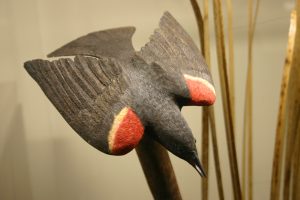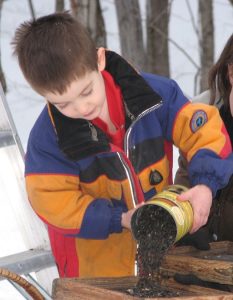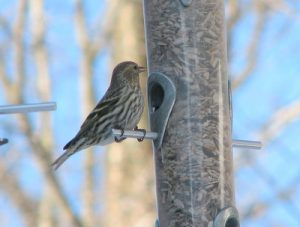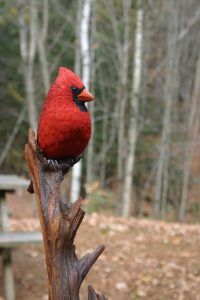
March often feels like everything is hurtling towards change. Welcome to spring…even if if it often doesn’t feel like spring at all.

where natural history meets art

March often feels like everything is hurtling towards change. Welcome to spring…even if if it often doesn’t feel like spring at all.

One of the neat things about February is that both Feederwatch and the Great Backyard Bird Count happen that month. People come into the museum to watch from our windows (it’s usually warmer than outside) and to learn about birds from the carvings. (The birds don’t fly away! So helpful!)
What would you like to learn next about birds?
Explore mixed art, let a kid be Eggstatic, or enjoy a bird monitoring walk. Also, the deadline for submissions to “The Power of Perspective” is this month!
The Museum is open by appointment November through April. The trails are open sunrise to sunset, every day. Libraries have passes, and admission is always free for members (https://birdsofvermont.org/membership/).

Fun to see a Pine Siskin this month! And thirteen other species…fifteen if you look at all the observations records around the Museum (we’re such a hot spot!). Nice set of winter birds.
This event has been cancelled. Hope to see you next month!
Join our monthly monitoring walk to record birds at the Museum’s trails, forest, and meadow. Learn something new, share what you know, or both!
All birders —current, experienced, newbie and would-be— welcome! Most fun for adults, older children.
Please bring your own binoculars and dress for the weather. We recommend bringing tick repellent (in most seasons) and a water bottle.
Max: 12 people
Outdoors
If the walk fills, we’ll have a waitlist; we also offer these bird monitoring walks the last Saturday of every month.
(Photo: Female Northern Cardinal. Used by permission of the photographer.)
Visit us February 17th, 2024, to see what birds we’re counting for the Great Backyard Bird Count!
We’re open from 10-4 on Saturday for the GBBC
Members admission: Free!
Friday – Monday, February 16-19, 2024 • All Over the World
From the Great Backyard Bird Count website:
Launched in 1998 by the Cornell Lab of Ornithology and National Audubon Society, the Great Backyard Bird Count was the first online citizen-science project to collect data on wild birds and to display results in near real-time.
Since then, more than 100,000 people of all ages and walks of life have joined the four-day count each February to create an annual snapshot of the distribution and abundance of birds.
For more info visit Great Backyard Bird Count website
[slideshow_deploy id=’6266′]
Friday – Monday, February 16-19, 2024 • All Over the World
With a friend or one your own, watching one bird or counting hundreds, join a worldwide community-science and conservation project! All you have to do is observe for 15 minutes and submit your observation(s). Here are few details from https://www.birdcount.org/participate/ :
Step 1 – Decide where you will watch birds. [Suggestion: at the Museum on Saturday!]
Step 2 – Watch birds for 15 minutes or more, at least once over the four days, February 16-19, 2024.
Step 3 – Count all the birds you see or hear within your planned time/location and use the best tool for sharing your bird sightings:
For more info: https://www.birdcount.org/
[slideshow_deploy id=’6266′]
Pick up your art, drop in for the Great Backyard Bird Count, and learn about animals in winter.
The Museum is open by appointment November through April. The trails are open sunrise to sunset, every day. Libraries have passes, and admission is always free for members (https://birdsofvermont.org/membership/).

December was a bit wet this year. We were fine (still watching how the streams flow around and under our various bridges, of course). People seemed to be enjoying staying in Gale’s Retreat, and we certainly have enjoyed our walks in the woods to check on it before and after the guests.
One heavy wet snowfall took out more main branches from the crabapple tree. We’ll see how the Ruffed Grouse adapt to that.
Pick up your art, schedule a visit, or sign up for the January bird walk.
The Museum is open by appointment November through April. The trails are open sunrise to sunset, every day. Libraries have passes, and admission is always free for members (https://birdsofvermont.org/membership/).